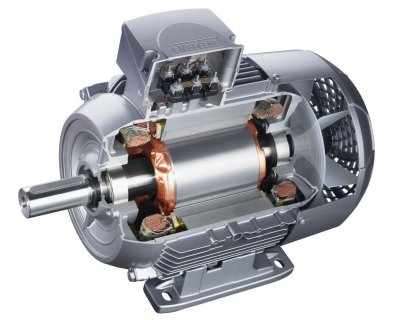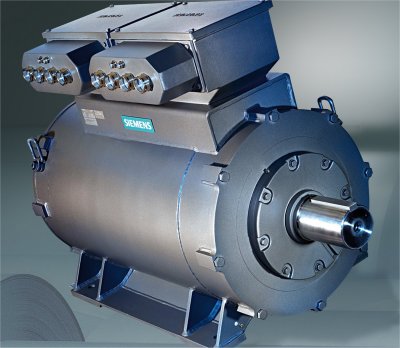Eff1 or Eff2?: just choose your rotor
 Siemens has unveiled a new generation of low-voltage IEC-frame motors that can deliver either Eff2 or Eff1 efficiency performance, depending on the type of rotor they contain. The higher efficiency versions incorporate a solid-copper rotor, similar to the one used in a range of NEMA motors that Siemens launched in North America last year.
Siemens has unveiled a new generation of low-voltage IEC-frame motors that can deliver either Eff2 or Eff1 efficiency performance, depending on the type of rotor they contain. The higher efficiency versions incorporate a solid-copper rotor, similar to the one used in a range of NEMA motors that Siemens launched in North America last year.
The availability of two levels of efficiency in the same frame size with the same shaft height means that OEMs can upgrade their machines from Eff1 to Eff2 (or offer their customers a choice of efficiency) without redesigning their machines. The high-efficiency motors can also be retrofitted to replace existing Eff2 motors.
Siemens’ NEMA copper-rotor motors achieve a higher level of efficiency than the IEC versions (shown in a cutaway view below). The company argues that there is a greater, legislation-driven demand for ultra-efficient motors in North America than in Europe.

The aluminium-framed 1LE1 IEC motors cover ratings from 750W–18.5kW in frame sizes 100–160, and are available in versions with two, four, six or eight poles. They are available in self- or force-cooled formats.
As well as the standard versions of the LV motors, Siemens is offering versions with higher output powers. All versions will operate at up to 500V, either connected directly to the power supply or driven by an inverter. Encoders and brakes can be added, if needed.
Siemens also used the Hannover Fair to launch a new range of high-performance, permanent magnet torque motors for high-torque or low-speed applications. The compact, quiet HT-direct synchronous machines (shown below) are said to be up to 3% more efficient than alternative drives using gears.

Unlike induction motors whose reactive power requirements grow as the number of poles increase, it is relatively easy to design high-pole synchronous machines excited by permanent magnets. Such machines are characterised by short winding heads and thin stator yokes, resulting in compact machines.
Siemens new direct-drive motors can deliver speeds up to 800 rpm and produce up to 42kNm of torque, corresponding to an output of around 2.1MW. The IP55-protected machines have solid shafts and are available in air-cooled cast-iron housings, or water-cooled steel housings. Maintenance is said to be minimal.





